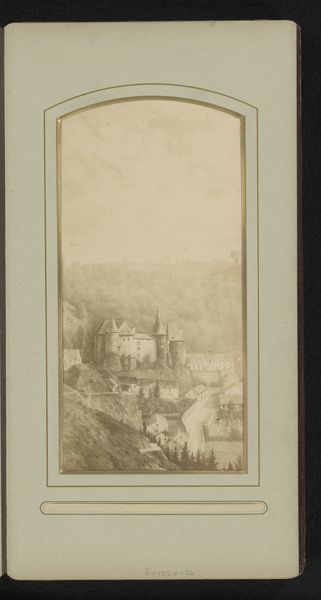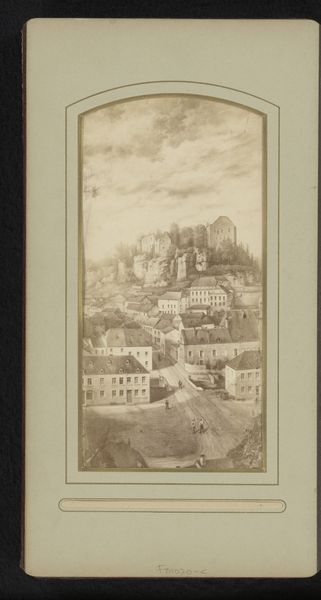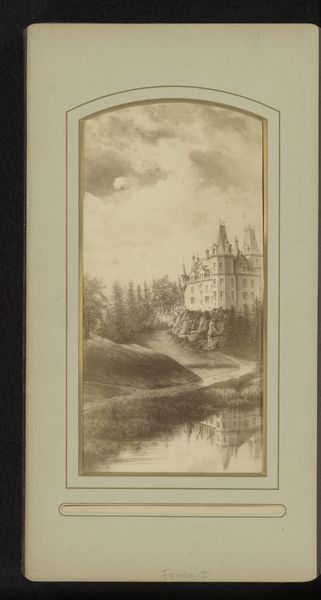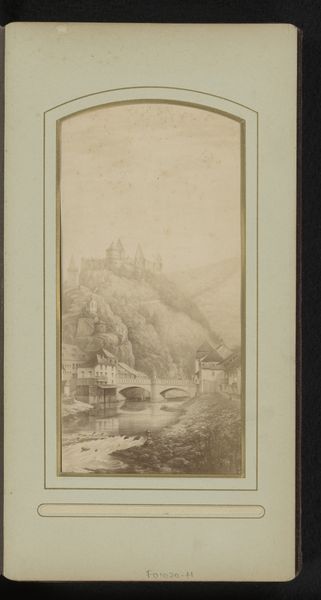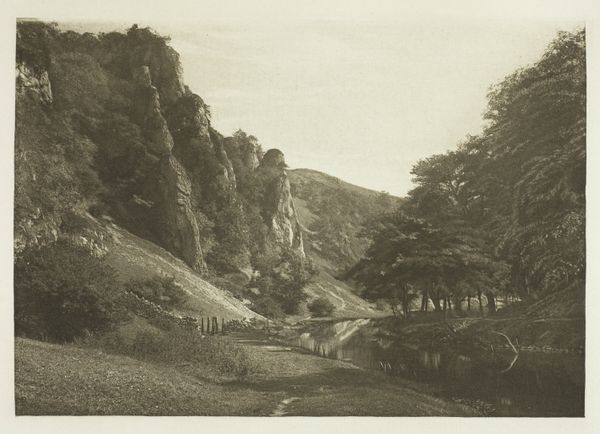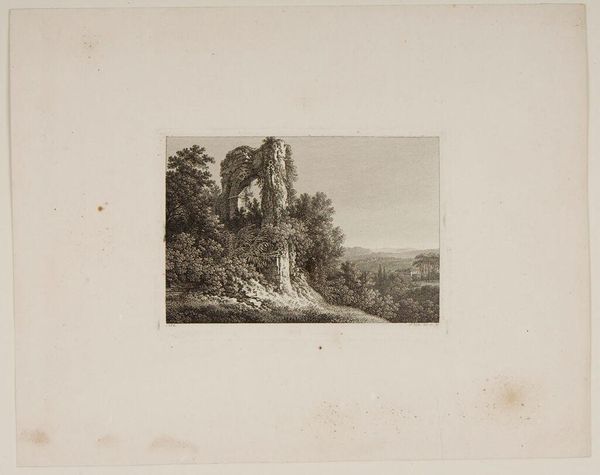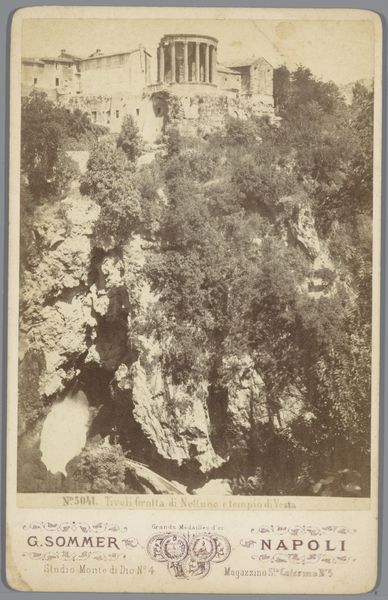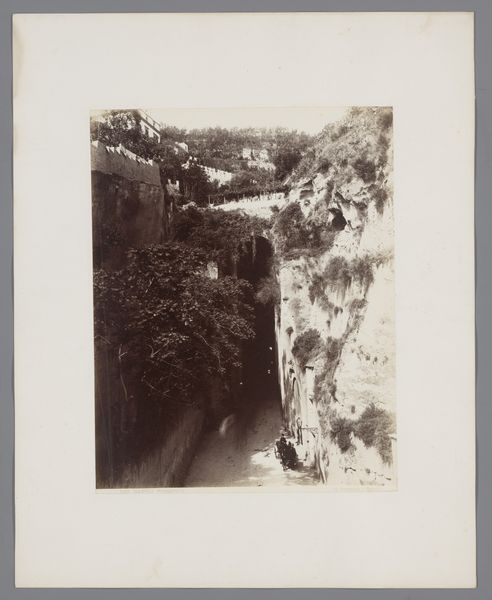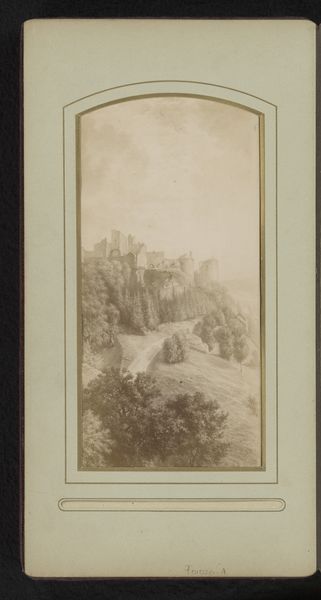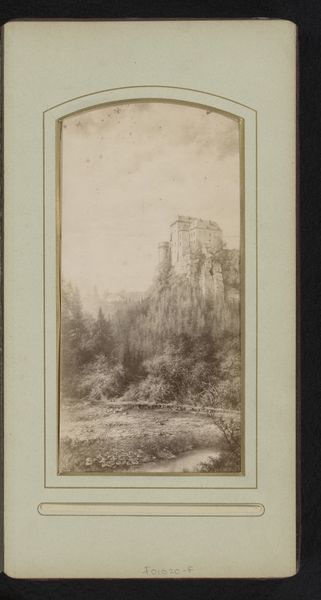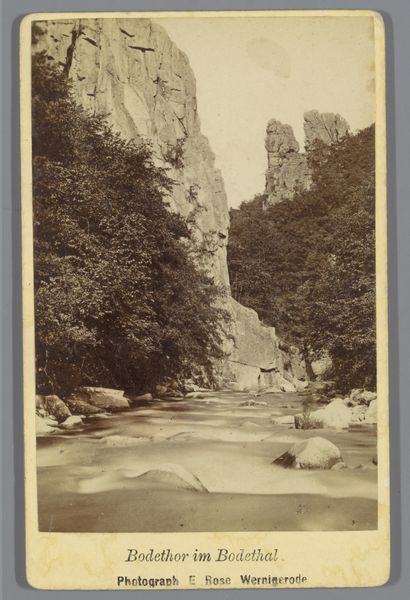
paper, photography, gelatin-silver-print
#
16_19th-century
#
pictorialism
#
landscape
#
paper
#
photography
#
coloured pencil
#
gelatin-silver-print
#
cityscape
#
mixed media
#
watercolor
#
realism
Dimensions: height 106 mm, width 145 mm
Copyright: Rijks Museum: Open Domain
Editor: So, this is Albert Wilhelm Ebeling's "Wernigerode Seen from the Lindenberg," taken in 1882. It’s a gelatin silver print. It's quite striking how the castle dominates the landscape. How do you interpret this work? Curator: It’s tempting to see this as a straightforward depiction of German Romanticism, the majestic castle overlooking a picturesque town. But let's think about the late 19th century context. Germany was consolidating power, and architecture became a tool for projecting national identity. Consider, is this photograph simply capturing beauty, or also reinforcing a specific hierarchy, visually celebrating authority? How does the town below appear in relation to the castle in the distance? Editor: That's interesting. I hadn't considered the power dynamics at play. I was just thinking about the picturesque quality of it. Curator: And that’s valid! But it’s important to recognize that even the picturesque can be political. Who has access to that beauty? Who benefits from that representation? Also, consider that this is a gelatin silver print— a relatively new technology at the time. How might the reproducibility of photography reinforce these ideologies? Editor: So, you are saying photography becomes a means of distributing a certain political perspective through a seemingly neutral landscape. Curator: Precisely. And we must question, whose perspective? Ebeling’s, certainly, but also, what power structures were being reinforced through the act of capturing and disseminating this image? Who felt represented and who was rendered invisible in such a composition? Editor: I’ll never look at another landscape photograph the same way again. It shows you how much the socio-political background influences artistic creation. Curator: Exactly! And by understanding that, we can begin to unravel the complex layers of meaning embedded within seemingly simple images.
Comments
No comments
Be the first to comment and join the conversation on the ultimate creative platform.
